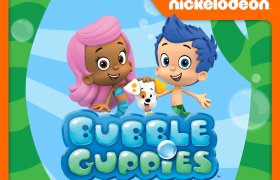Baby Development Milestones: A Month by Month Guide
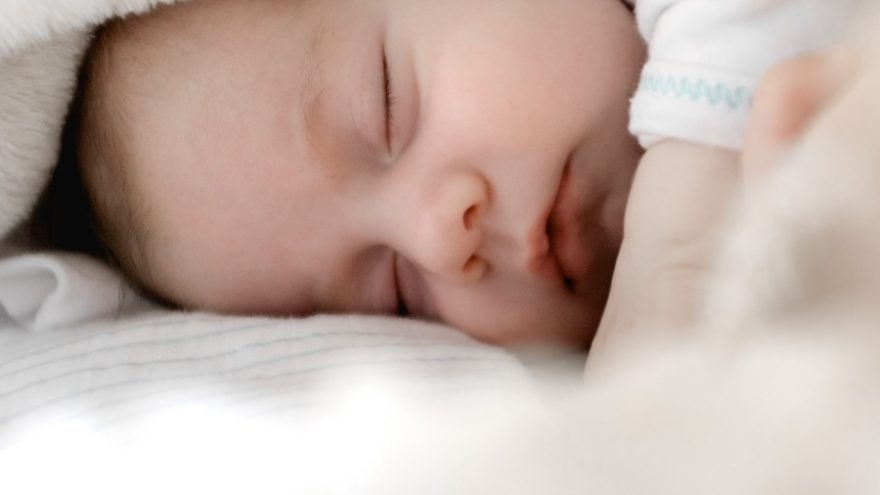
Babies come into the world with their six senses and some are not fully developed yet. They still can hear, smell, touch or feel their family’s touch, see shadows, taste, and the last sense is called balance which will develop during the first year of their lives. Newborns are still able to begin the process of developing their emotional behavior. Some children seem to be sensitive when they are small and this still is present in their adulthood. As infants grow and eventually become adults, they learn how to control their emotions. Most children will learn how to develop control or gain a tough exterior, but it doesn’t mean that their feelings won’t be hurt. Infants cry when they need attention and this is their first form of communication. They begin to look at their parents and study their faces when they hear your voices. This is another form of infants communicating with family members. When they reach 4 to 6 weeks, most babies will begin to smile because they feel happy and loved. They are beginning to know their parents will keep them safe.
Your baby is starting to grow very fast and keeps learning. Their vision is getting better and they start to focus on the objects they see. The colors newborns like the best are black, red, and big squares or polka dots.
Tummy Time
Parents might want to think about trying tummy time because this will help your baby build the strength they need to catch up to their milestones month by month. The best time to start tummy time is when you bring your baby home from the hospital. You can start tummy time by doing this a few times daily, then working up to an hour a day.
Bonding
Bonding is very important for the emotional development of your baby and helps them meet their milestones quickly. Make sure you always hold your baby if they are upset so they can feel your comfort. Do many parents wonder if they are spoiling their baby by holding them? All babies develop different emotional needs and some children love cuddling and there are some babies that become very independent. When your baby begins to self soothe, they begin to learn how to stay calm longer. Don’t worry about spoiling your baby because they need all the love and attention you have to give to them.
Milestones
The developmental milestones are standard according to the American Academy of Pediatrics. The Abilities are developmental steps each child should accomplish by the end of every milestone. If your child is slow or misses one or two milestones, parents shouldn’t worry because every child develops at their own rate.
0 to 3 Month Milestones
 Motor Skills
Motor Skills
- Your baby should be able to push up on their arms when lying on your tummy
- When the baby is lying on the tummy, they should begin to lift and hold their heads up
- Baby should be able to move their fists from open to closed
- Baby should be able to bring their hands up to their mouth
- Baby should be able to move their legs and arms off of any surface when they become excited
Sensory Milestones
- When the baby lies on their back, the baby should be trying to reach for a toy in sight that is held above their head. An example is a play mat with toys that hang
- When a baby is lying on their backs, they should be able to watch a toy that moves from side to side
- When baby lies on their back, the baby should be able to keep their heads still and center and be able to watch faces and toys
- Your baby should also be enjoying their independence with many kinds of different movements
Communication Milestones
- Baby should be able to turn their head towards a sound or voice
- Your baby should be able to quietly smile when they hear a sound or voice
- Baby should be interested in different faces
- Baby should be able to make eye contact
- The sound of your baby’s cries should be able to help parents recognize different needs
- Baby should be cooing and smiling
Feeding Milestones
- Baby should be able to latch on to a nipple or bottle
- Baby should be able to move their tongue forward and back to back to suck
- Baby should be drinking at least 2 ounces to 6 ounces of liquid every feeding and at least six times daily
- Baby should be able to suck and swallow without problems during their feeding
 Abilities
Abilities
Play and Social Skills
- Baby should enjoy playful face interaction with different people
- Baby should be able to coo as a form of communication to playfulness
- Baby should be able to notice sounds and respond back to sounds
Coordination
- Baby should be able to move their legs and arms off of any surface when they become excited
- Baby should be able to see and follow black and white or bright colored objects
- Baby should be able to open and shut their hands
- Baby should be able to bring their hands to their mouth
- Baby should be able to be on their tummies for short amounts of time
Daily Activities
- Baby should be able to latch on when nursing or drinking a bottle
- Baby should be able to sleep and be calm when riding in a vehicle if they are not hungry or tired
- Baby should be able to begin to enjoy their baths
- Baby should be able to understand the meaning of changing their diaper and not be fearful and cry anymore
Expressions
- Baby should be able to know when they are being comforted when cuddled and know their parent’s touch
- Baby should no longer be frightened by daily sounds
- Baby should be happy most of the time unless they are hungry or tired
- Baby should be able to enjoy different play experiences like bouncing and rocking
- Baby should be able to calm down with rocking, touch and soft sounds
- Baby should no longer be fussing for long periods of time
 Warning Signs
Warning Signs
Motor
- This is a warning sign if it is hard for the baby to lift their head
- This is a warning sign if the baby has stiff legs with barely any movement or no movement at all
- This is a warning sign if the baby constantly keeps their hands in fists and has no arm movement
- If the baby starts to push back with their head, this is another warning sign
Sensory Warning Signs
- Baby does not follow any objects with their eyes
- Baby doesn’t like being held at all
- Baby keeps their fists closed constantly
- Baby doesn’t like any form of movement with their body
Communication Warning Signs
- Your baby will not cry when they are hungry or miserable with dirty diapers
- Your baby will not notice any kind of loud or intense noise
- Your baby doesn’t make any kind of eye contact or smile at their caregiver
Feeding Warning Signs
- Baby can’t latch on properly while breastfeeding or drinking from a bottle
- Your baby can’t control sucking movements so most of the breast milk or formula comes out of the side of their mouth during their feeding
4 to 6 Month Milestones
 Motor Milestones
Motor Milestones
- Baby should be using hands for supporting themselves while sitting
- Baby is able to roll from tummy to back and from back to tummy
- If you support baby when they stand, they should be able to hold their own weight with their legs
- Your baby can reach for toys within range while they are on their tummy
- Baby is now able to reach both feet and hands and play with their feet
- Baby should be able to take a toy and put it in one hand and transfer to the other hand when they lay on their back
Sensory Milestones
- Baby should be interested in exploring new objects and toys
- Baby should be happy for the most part when they are not hungry or tired
- Baby should be able to bring both hands to their mouth
- Baby should be able to remain calm with rocking, touch and soft sounds
- Baby should no longer become scared of daily noise
- Baby should be enjoying the ability to move around
Communication
- Your baby should be able to react to fast noises or sounds
- Baby should be able to listen and show a response when they are being spoken to
- Baby should be able to start using consonant sounds such as babbling, da, da, da, or ma, ma, ma,
- Baby knows how to use their babbling to get your attention
- Baby should be able to make different kinds of sounds to show their feelings
- Your baby should notice and express glee when their toys make noise
Feeding
- Your baby should definitely show interest in eating food
- Your baby should be able to see the spoon coming and open their mouth
- Your baby should be able to eat off of the spoon and eat pureed food from the front of the mouth and move it back to swallow
- Your baby should start eating cereals, pureed food, only one item at a time like carrots, sweet potatoes, squash, apples, and pears are good to start with
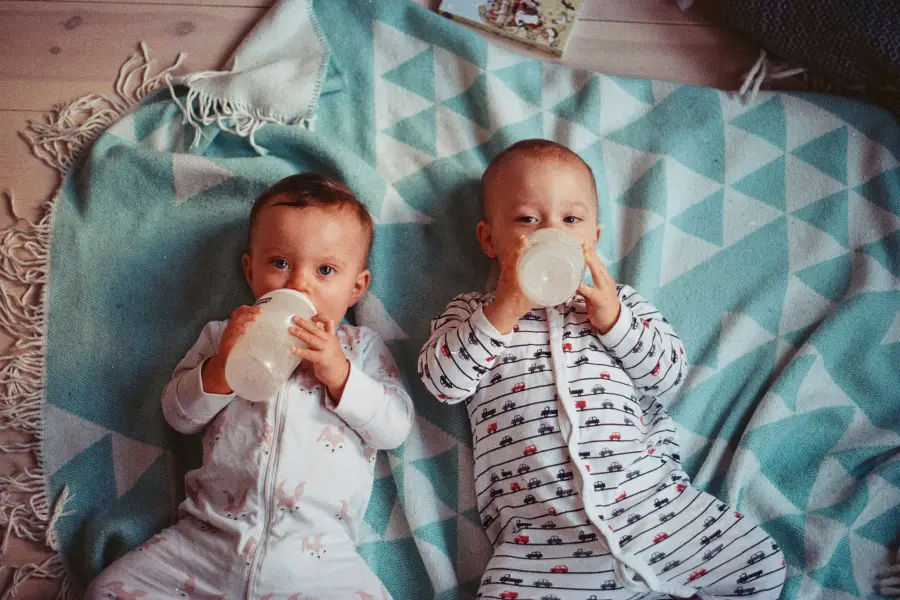 The Abilities of a 4 to 6-Month-Old
The Abilities of a 4 to 6-Month-Old
Play and Social Skills
- Your baby should love playful interacting with other people and enjoy peek a boo and patty cake to start
- Baby should start using their vocal cords to respond to these playful moments
- Baby should be able to turn their head towards all sounds
- Baby should now know how to maintain their eye contact with people they recognize during playtime
- Baby should be able to enjoy playing and baby should now be able to raise their hands when they are playing with their toys that have the feel of different textures
- Baby should love musical toys
- Baby should be able to raise their hands when they want to be picked up and carried
- Your baby should like different types of movement, like swing gently for example
Coordination
- Baby should start beginning to put weight on their feet when they are supported by standing
- Baby should be able to lift their head forward as they are being pulled to sitting, from lying on their backs
- At 5 months old your baby should be able to roll from their tummy to back and at 6 months old, they should be able to roll from back to tummy
- Baby should be able to remain on their tummies for short periods of time
- Baby should now be able to pick up their head and prop on their elbows during their tummy time
- Your baby should be able to use their hands to play with and check out different toys
- Baby should be able to use both hands the same to play with toys
- Baby should be able to turn their head to watch and follow the movement of people and toys they capture their attention
Daily Activities
- Baby should be able to latch on while nursing or drinking their bottle
- Baby should be able to enjoy riding in vehicles
- Baby should love their bath time
- Baby should enjoy their diaper change and not cry during the changing of the diaper
- Your baby should not be scared when moving around to lay on their back for their diaper changes
Expressions
- Baby should understand comforting by their parents either by cuddling or their parent’s touch
- Baby should not be afraid of daily noises
- Your baby should be happy if they aren’t hungry or tired for the majority of the day
- Your baby should know how to enjoy playtime
- Your baby should understand calming feelings like rocking, touch, and soft sounds
 Warning Signs
Warning Signs
- If your baby has a rounded back when sitting, this is a warning sign
- If your baby has problems with controlling their head and are unable to support their head, this is a warning sign
- If your baby can’t bring their arms forward to reach out, this is a warning sign
- When your baby arches their back and stiffens their legs when pulling themselves to sit, this is a warning sign
- When your baby holds their arms back and has stiff legs while you are supporting them standing, this is a warning sign
Sensory Warning Signs
- Your baby doesn’t try to reach for their toys
- Your baby can’t bring their hands or any objects to their mouth
- Your baby has trouble watching moving objects
Communication Warning Signs
- When your baby doesn’t respond to sounds or voices, this is a warning sign
- When a baby can’t make eye contact or avoids it, this is a warning sign
- When your baby can’t make a vowel sound, this is a warning sign
- If your baby doesn’t smile or laugh, this is a warning sign
Feeding Warning Signs
If your baby can’t hold their own bottle during their feedings, this is a warning sign
7 to 9 Months Milestones
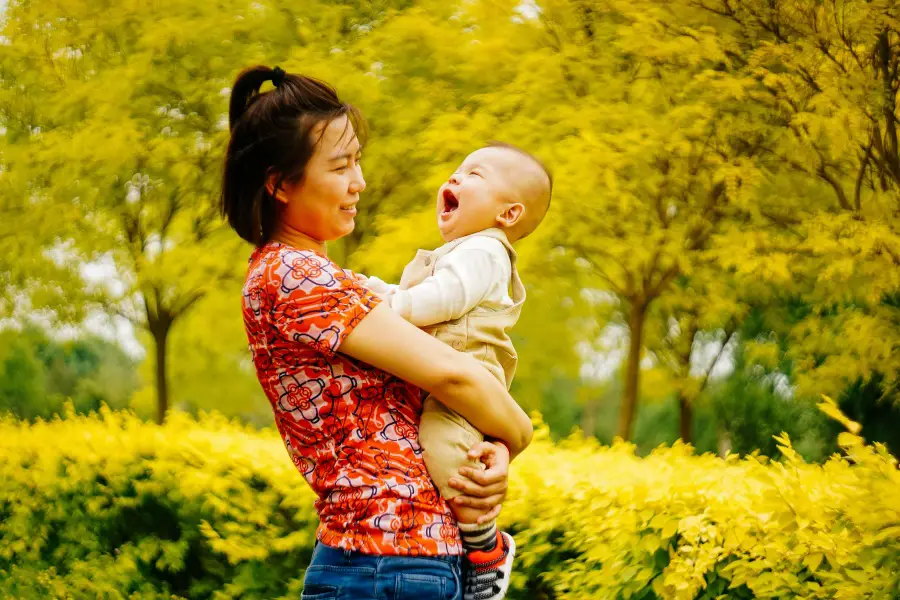 Motor
Motor
- Baby should be sitting with support by now
- Baby should be reaching for their toys now without falling
- Baby should be moving from tummy to back into a sitting position
- Baby should start to move and use alternate leg and arm movement as in crawling
- Your baby should be able to pick up their head and push their elbows in a scooting movement during tummy time
- Your baby should be able to turn their head to watch the movement of different objects when they are sitting up
- Your baby should show more control when rolling and sitting
- Your baby is now ready to pick up small objects with their thumbs and fingers for hand coordination
- Your baby is beginning to imitate others now while playing
Sensory
- Baby now enjoys a variety of movements
- Your baby explores and looks at objects with both hands and their mouth
- Your baby can turn the pages of a chunky board book
- Your baby can now experiment using the proper amount of force to pick up objects
- Baby can now focus on near and far objects
- Baby can now figure out the shapes, sizes, and textures of their toys and surroundings by experimenting
- Baby can watch their environment from many positions while lying on their backs, or tummy, and sitting crawling and standing with help
Communication
- Baby can use a variety of sounds and combine syllables in their babbling
- The baby looks at familiar objects and knows people’s names
- Baby can recognize the sounds of names
- Baby talks now in a two-way communication style
- Baby can understand routine gestures and commands
- Baby knows words that are used constantly*Baby uses their own simple gestures like waving bye-bye and shaking their head “No”!
Feeding
- Baby is now in a high chair and holds and drinks from their bottle
- Baby enjoys gum teethers that massage
- Baby can now eat thicker pureed foods and mashed foods
- Baby stays full longer
- Baby is constantly looking and reaching for a variety of objects like food that is around
- Baby shows a great reaction to new smells and different tastes
 Play and Socialization
Play and Socialization
- Baby is interested with playing Peek a boo
- Baby loves playing with toys of different textures
- Baby loves toys that are musical
- Baby is very interested in playing with anything colorful
- Baby can raise their hands up towards people to be picked up and carried
- Baby now knows how to maintain eye contact with people during playtime
- Baby loves moving and exploring the world when they are placed on the floor or carpeting
- Baby loves all types of movement, like swinging gently in the air by their parents
Coordination
- Baby is able to put weight on feet while someone is supporting them
- Baby is can pick up their head and scoot by pushing their arms and elbows during tummy time
- Baby will keep their head in a forward position when being pulled back to a sitting position from lying on their back
- Baby will move across the floor when they spot a toy they want
- Baby can now play on their tummies
- Baby can move in and out of all kinds of positions *Baby can now turn their head to watch where their toys move and people are going
- Baby has more balance for sitting
- Baby can use both hands to put together to experiment with their toys
- Baby will use both hands equally to play with their toys
Daily Activities
- Baby is not afraid of tipping their head back when they are moving from sitting to lying down
- Now your baby is ready to change to milk or formula to infant cereal
Expressions
- Baby has the ability to feel comforted by their parents by cuddling
- Baby is usually happy if they aren’t tired or hungry
- Baby can be calmed down by rocking them, touching them or hearing soft sounds
- Baby is no longer afraid of daily sounds
- Baby has now established their own healthy and happy sleeping schedule
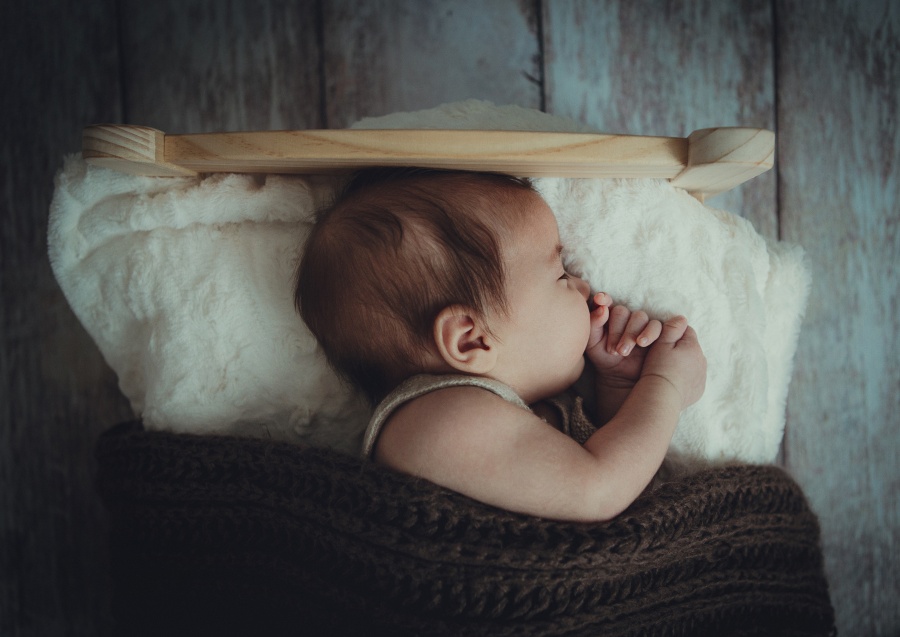 7 to 9 Month Warning Signs
7 to 9 Month Warning Signs
Motor
- Baby favors one hand
- Baby has a rounded back
- Baby has weak use of arms while sitting
- Baby has trouble crawling
- Baby can only use one side of their body to move
- Baby can’t take weight on their legs
- Baby can’t change toys from one hand to another
Sensory Warning Signs
- Baby shows no interest in toys of different textures
- Baby doesn’t like musical toys
- Baby isn’t interested in looking at anything colorful
- Baby won’t attempt any kind of movement to explore when placed on the floor
- Baby doesn’t like any kind of movement like swing
- Baby is fearful of daily sounds
Communication Warning Signs
- Baby shows no interest in any interaction with people
- Baby can’t use eye contact when playing
- Baby doesn’t respond to sound or voices
- Baby doesn’t respond to their own name
Feeding
- Baby still doesn’t latch on when nursing or bottle feeding
10 to 12 Month Milestones
 Motor
Motor
Baby can now pull themselves up and move along the side of the furniture. They can also stand alone and start taking numerous steps independently. Baby can now move in and out of many positions to check out their environment and get the toys they enjoy playing with. They can now maintain perfect balance when they are sitting and can throw their toys and other objects. They can also maintain their balance when sitting and throwing their toys. Baby can know to clap their hands and put objects into containers that have a large enough opening. They can use their thumb and pointer finger to pick up small objects.
Sensory
Baby now enjoys listening to music and songs. They know how to use their hands and fingers to explore and put things in their mouth. Baby now will crawl to or away from different objects that they see in the distance.
Communication
Now your baby says the word mama meaningfully and dada too. They respond to simple directions and questions like “come here”. They can babble for long periods of time and that is their way of communicating socially. They are able to say a few words and try to imitate speech sounds they heard constantly. Their babbling has the sounds and rhythms of speech. They watch where you are pointing by looking and listening to what you are saying. They learn what “no” means. A baby also begins to use hand movements as a form of communication for their wants and needs, for example, they raise their hands when they want to be picked up.
 Feeding
Feeding
Baby now uses finger food to feed themselves. They start eating more of a variety of food and start using an open cup. They are now ready to try soft cooked veggies, soft fruits, and finger foods, banana slices, and pasta that is cooked well. They are just about ready to learn to eat with eating utensils. A baby also loves a large variety of smells and tastes.
10 to 12 Month Abilities
Play and Social Skills
Baby is interested in playing redundant games like peek a boo and patty cake. They start pointing to different objects that interest them by 12 months old. Baby now like to bang pots and pans or toys that make noise. They are now excited to be put on the floor so they can go exploring. They move really fast when they find the toy they are looking for.
Coordination
Baby can now pull themselves up to stand and is able to hold their head upright when they are crawling by 11 months. Baby now will walk or crawl to get what they want. They can now put weight on their hands or their feet and move in and out of positions while still using their own support to stand. They can now sit unsupported and turn their head to look at different things and not lose their balance. They can throw balls while maintaining their balance. Baby can now find ways to move and play by themselves.
Daily Activities
Baby now enjoys their baths and is eating more food. They are able to use their fingers to pick up tiny bits of food and eat. They will let you get them dressed without fussing around. They have a great sleep schedule and are able to fall asleep by themselves because they know how to self soothe.
Expressions
Baby at this age will cry when they notice they are hurt but are able to soothe themselves when they become upset.
 10 to 12 Month Warning Signs
10 to 12 Month Warning Signs
Motor
Watch for the baby if they only sit to one side and only use arms to pull themselves up to stand. If they need their hands to help them sit, it’s a warning sign. Look for poor head control when they are in an upright position.
Sensory
Baby will become fussy when they start to move around. In addition, when a baby has an extreme reaction to touch or when exposed to different textures, this is a warning sign.
Communication
When the baby doesn’t turn when you call their name or respond to their own name, this is also a warning sign.
Feeding
If a baby isn’t using their tiny fingertips to pick up tiny bits of food or won’t eat solid foods and only drinks milk, this can be a warning sign.
These are all milestones that are reinforced by the American Academy of Pediatrics so follow this guide and look at the milestones your baby reaches and when they reach specific goals. Make sure to keep a baby book journal for your reflections and your family’s. This is also a great gift for your child when they are all grown up.






